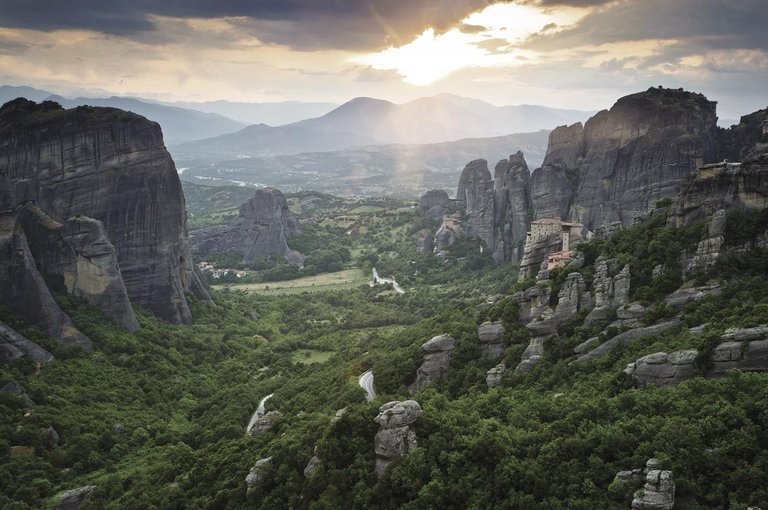Meteora, suspended in the air

In the middle of Greece, to the north-east of the periphery of Thessaly, giant rocks rise from the earth to the sky. "Suspended in the air" means "Meteora", and it can be said that there are monasteries built on the tip of these rocks. Byzantine architecture and the beauty of nature converge in Meteora, and the monasteries look like a continuation of the rocks.
Sixty million years ago, the movements of the earth’s crust caused the rise of the seabed, opening up several faults in this thick layer of sandstone. From then on, water, wind and extreme temperatures would give shape to the sandstone and conglomerate columns that are seen today. Horizontal remains can be seen on these rocks, marks left by a prehistoric sea.
From the 9th century onwards, monk ascetics began to live on the rocks of Meteora. They initially lived in holes that could be 500 m above the ground. In the 14th century, the monks climbed the rock to escape the Turkish and Albanian attacks, and then began to build monasteries at the tip of the rocks. More than twenty were built and six remain today.
Buletina
Bidali zure helbide elektronikoa eta jaso asteroko buletina zure sarrera-ontzian











